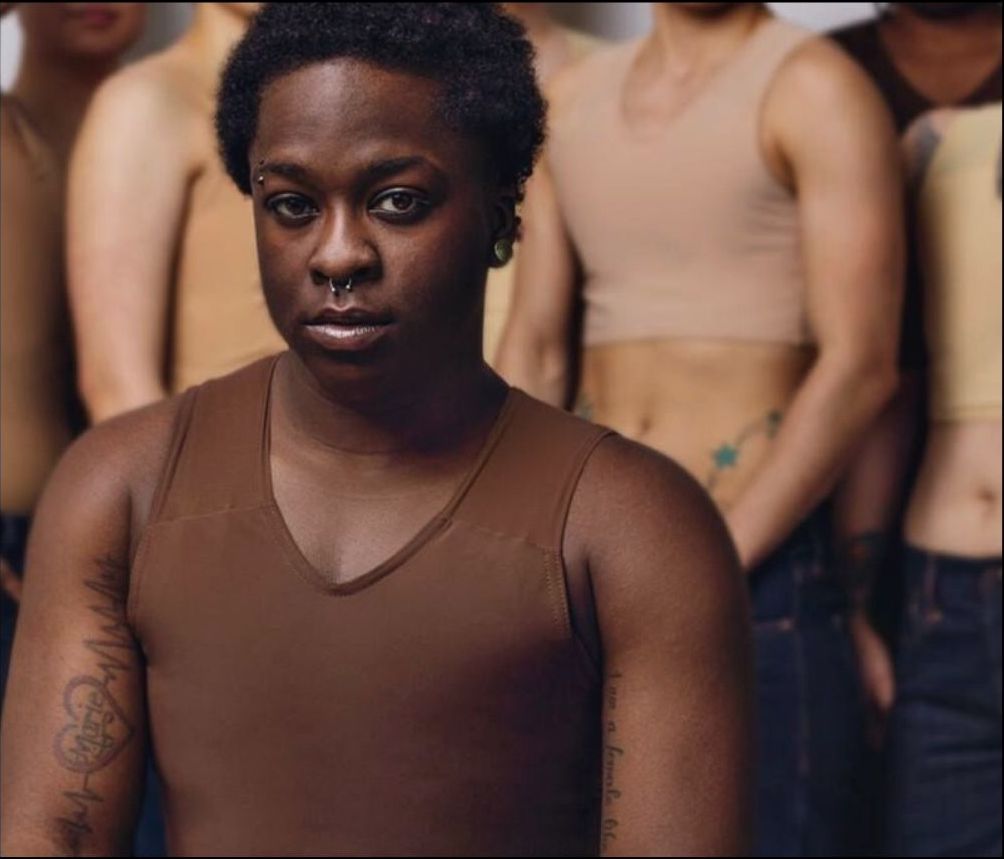
The Stages of Transitioning
As the year 2020 started, and I witnessed the 45th president of the United States attempt to overturn the Affordable Care Act by eliminating protections from gender-based discrimination and making it “reasonable” for healthcare providers to turn away LGBTQIA+ folks and reject transgender healthcare—all while also living through a global pandemic—I knew it was time to get Top Surgery. The uncertainty of this time unsettled me more than the dysphoria itself. Of course, the dysphoria that I experienced when my natal puberty arrived has always existed with my chest, but my chest wasn’t very big, nor very noticeable in clothes. Working out and building muscle mass in my body helped “masculinize” my chest parallel to a cisgender man with mild gynecomastia.
Earlier in my transition when I considered transitional surgeries, I thought about children. I was only 18 years old at the time and wasn’t nearly as open minded as I am now, but deep in my gut, I knew what I wanted for my future, and that definitely included children. I am a transgender man who wouldn’t mind carrying a child from my own body. I’ve asked myself, what would that look like? Currently, there’s very little research, information, or resources on transgender reproductive health, but I’ve already known the benefits of breastfeeding and how good it would be for my children; it was this issue, most of all, that made surgery feel less urgent for myself. As I encountered more information, I’ve learned that some trans men who have had the Double Mastectomy procedure were still able to breastfeed their children. My lover, Mia, a transgender woman, and I talked about different ways to potentially breastfeed. I’ve discovered that some trans women, or specifically, assigned-male-at-birth (AMAB) folks are able to breastfeed as well. Due to the scarce information around those facts, I still feel uneasy because I don’t like the thought of being an “experiment” or a “guinea pig” for the medical field, which is the reality for a lot of trans folks. I want to make sure that my child is healthy and would be getting the proper nutrients. Under close monitoring, I’m still willing to try different methods and if it doesn’t work out, we will adjust.
The Financial, Interpersonal & Internal Economics of Transition
The surgeon I preferred doesn’t accept insurance but I was able to save the money I needed between April and June this year to pay out-of-pocket for the doctor that I wanted to go to. To celebrate Pride Month and my 5 years on testosterone, which is on June 17, I decided to book my surgery for June 11, 2020.
Mia agreed to be my post-operation caretaker and I had everything prepared for the day of surgery. Due to the pandemic, there were extra safety precautions I had to take upon our arrival. Temperature screening, masks, and a dab of hand sanitizer were required in order to be admitted into the facility. I couldn’t help but feel that some of these precautions should have been happening in many other public spaces—especially medical facilities—to keep people safe. I sat wondering, before the pandemic, did they ever sanitize these chairs, doors, and people’s hands? If they did, how long in between each time? As a germaphobe, it’s kind of a relief that public places are taking public health more seriously.
The day of surgery Mia wasn’t able to go into the facility with me, which was kind of a bummer because I wanted to vlog the experience as much as I could for my own memories and I could have used her company. As I sat there alone, I was surprisingly tranquil. I felt no fear; I wouldn’t allow myself. I decided to be at peace with it finally happening for me. I did it all alone, with very little support and an abundance of misunderstanding.
When I finally saw my chest after the surgery, it was a very familiar feeling. I knew that what I saw in the mirror was what it was supposed to look like. I never had the scars in mind, but I knew it was meant to be flat, because that’s exactly what happened. It was meant to be. I didn’t feel happiness, sadness, regret, or anything. I was just at peace, with a sound mind. It was a weird feeling and unlike all the videos I saw on YouTube with guys crying tears of joy. I thought my reaction was meant to be that way but the feeling felt very familiar for me.
As far as my post-op care, I couldn’t have asked for a better caretaker than Mia. I had very minimal pain and was more independent than I thought I would be. I made sure not to go out and about for the first couple of weeks post-op. The thought of getting Coronavirus while healing from surgery was horrifying, especially with a tight bandage around my chest.

Photo Cred: The Lingerie Addict via Shannon Flaherty
As of August 2020, I’m finally 2 months post-op. The only bittersweet feeling has been discovering that there is a hierarchy that a trans person climbs after surgery; the more cis-apppearing you are, the higher your place on the hierarchy. Sometimes the reasoning can be valid: trans people who struggle with dysphoria can align with and find affirmation in seeing another trans person get surgery. But sometimes the reasoning is simply because cisgender-heteronormativity is the societal standard—people of all genders can unconsciously/consciously respect you more as a trans person for getting surgeries that “better” align with those standards of cisgendered-heteronormativity. People appear to take your transition more seriously and start to engage in trans-related conversation with you more often. The more cis-assumed you are, the more trans support seems to increase and you start to see how the fetishizing of trans masculine bodies can really project forward in people’s attitudes.
Preparing Myself for the Reception
I began to see that I was starting to fit the standard post-op, as if my body wasn’t good enough before. You know, the same ole drawing of the white trans masculine person with a flat chest without bottom surgery in many different patterns that you may see floating around on Tumblr or Instagram? I kind of started to fit that. I began to see respectability politics activated in relation to my status within transness—how people’s response to me shifted as my physical body shifted. And that shift was mirrored even in my own mind.
I knew that those elements would come; that is why I reminded myself that I was valid before surgery, why I decided I was going to feel peace, and why I decided to get surgery for me and no one else. I had to remind myself that at the end of the day, I did feel a certain pressure.
Because of the pandemic, this being a route I felt most comfortable taking, the privilege hierarchy, are also elements as to why. Despite all those things, one thing’s for certain, my body was valid and loveable before hormones and surgery just as it is after. Transphobes wasn’t going to stop me from accomplishing my dreams and risking getting exposed to a highly contagious virus was worth the peace of mind. Now I just know that if I do “get got” by it, I’m going out a man at peace.
Zahir Raye is a Houston native, activist in the transgender community, and a Co-host of the Black, feminist, trans podcast, Marsha’s Plate. He is known for his transparency and honesty on tough subjects that he presents from a transmasculine perspective. His easy-goingness is also a breath of fresh air in times of unnecessary conflict. He has used his own visibility as a tool for people to learn from, whether it be Youtube, his podcast, or his other social media.


This info is worth everyone’s attention. Where can I find out more?
Excellent beat ! I would like to apprentice while you amend your web site, how could i subscribe for a blog web site?
The account helped me a acceptable deal. I had been a little bit acquainted of this your broadcast offered bright clear idea
Wonderful article! That is the kind of information that are meant to be shared around the internet.
Disgrace on the seek engines for now not positioning this publish higher!
Come on over and consult with my site . Thank you =)